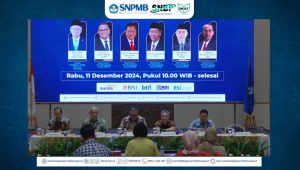Indonesia is one of the largest agricultural countries in the world, and its food is from agricultural and plantation products. One of the fields of agriculture and plantations that is currently developing is mushrooms. Mushrooms are one of the alternative food ingredients with protein almost equal to and exceed protein in chicken meat and red meat. It makes the consumption of mushrooms continue to increase. But have we ever thought that the mushrooms we buy in the market supported the claims? Do we ever doubt the authenticity of the products we consume? Yes, sometimes we only buy in traditional and modern markets. Sometimes we do not know whether the same mushroom is always really the same.
For the community, the most important thing is their freshness and the shape is similar to most characteristics. But the mushrooms which are only recognized visually really appropriate? Are there no mushrooms that are similar but their names are different? In reality, there is a lot of mushroom-based food in circulation. There are even many ready-to-eat processed products and treatment products which are mushroom-based.
All this time, people who live in urban areas, choose mushrooms based on morphological characteristics and “believe” the mushroom name based on the label printed. Surabaya is one of the big cities with a high value of mushroom consumption. Various types of fresh mushroom products and their preparations can be easily found around Surabaya. But until now there are still not many reports regarding unmatched mushroom and its label name. In fact, in the field of mycology, fungi may look very similar, but after further investigation, the types are different. And it is common in the field of food export-import to check the quality of food ingredients to their molecular level. Therefore, it is necessary to know the suitability of the type of fungus and the absence of contaminants that we often consume.
The more mushroom products on the market must also be accompanied by product suitability and absence of contamination tests. Several studies have been conducted as an effort to verify the type of fungus and the protection of consumer rights. It is interesting because we can find out whether the fungus we consume so far is the correct fungus and the same type even though we get it from different places and brands. The results are quite surprising because out of the eight types of tested fresh and processed mushrooms, a compatibility shown was more than 90%. In terms of genus similarity, the circulating mushrooms in the market are just the same, but in the same of fungus, there is a slight difference. It is caused by different types of fungi and different commodities. The mushrooms found in the traditional market are identified as Auricularia polytricha Apw8 cultivar while mushrooms found in modern markets are identified as Auricularia polytricha Sanyou cultivars.
Another interesting thing is the Shiitake mushroom that was successfully identified in this study. All three have the same type even though they do not share the same resemblance at the molecular level. The similarity value of Shiitake mushrooms ranges from 93-98%. This result is important information regarding the suitability and safety of mushroom-based products. And it is expected to be a protection for consumer rights to fit the label printed on the packaging. However, further research is still needed to uncover all types and processed products made from mushrooms. Prepare yourself for a new era of product claims to the molecular level. Protect our rights by ensuring mushroom products before consumption.
Author: Intan Ayu Pratiwi
Details of research available at:
http://www.envirobiotechjournals.com/article_abstract.php?aid=9469&iid=271&jid=3
Intan Ayu Pratiwi*, M. Hilman F. Amin and Bambang Irawan, DNA barcoding for identification of commercial fresh and processed mushroom-based products in Surabaya, Eco. Env. & Cons. 25 (April Suppl. Issue): 2019; pp. (S40-S45). Copyright@ EM International. ISSN 0917–765X.









